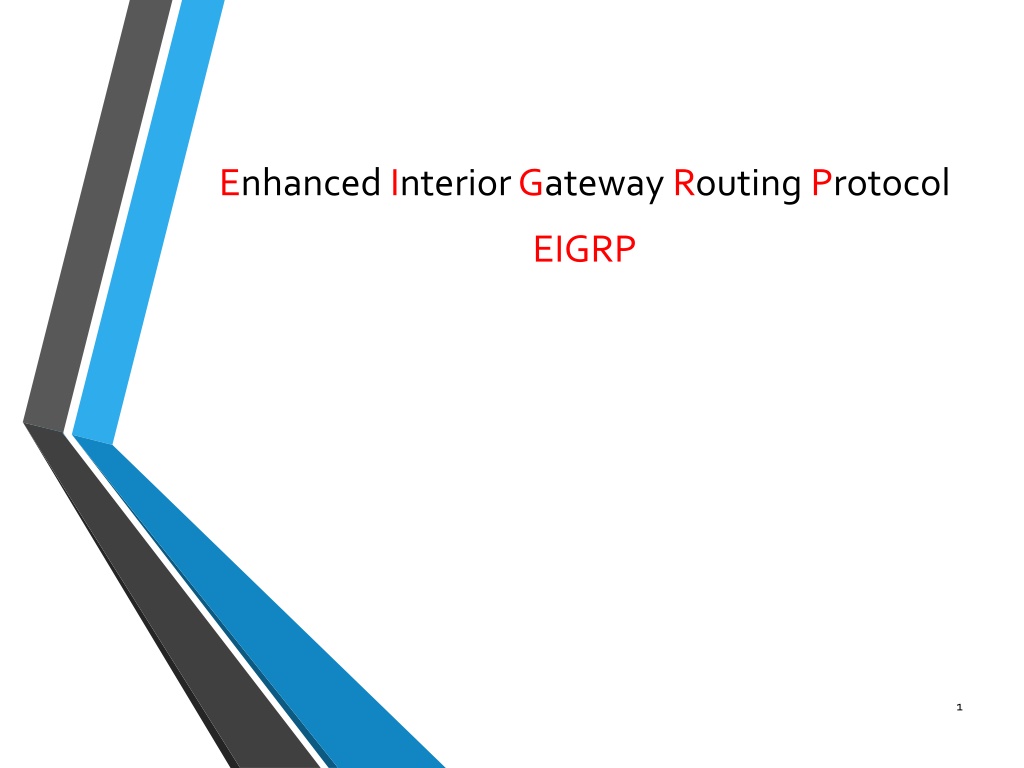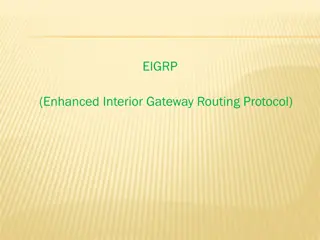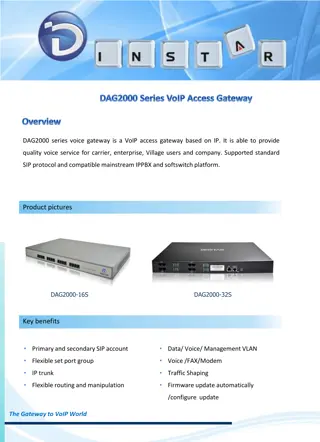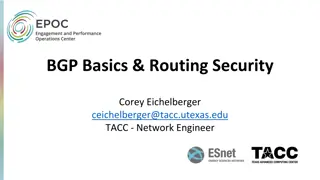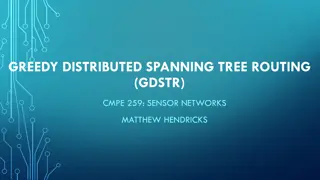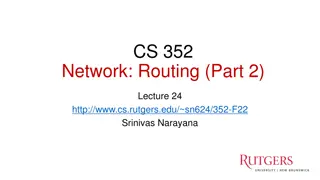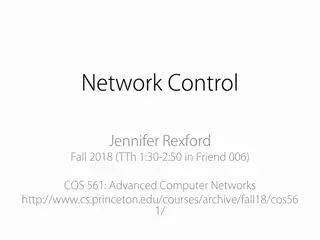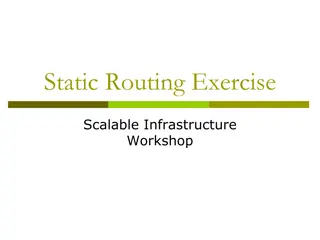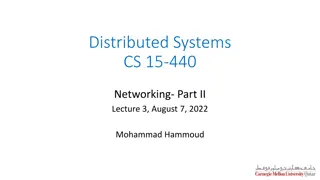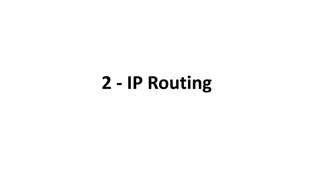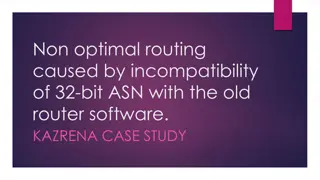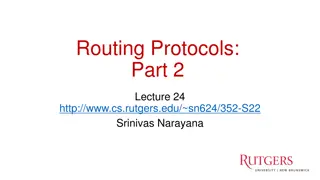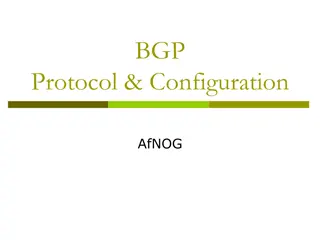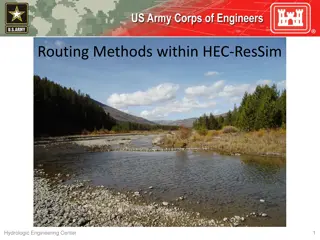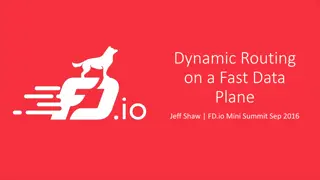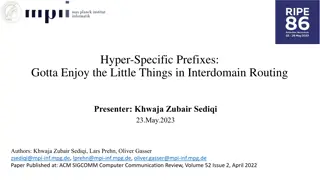Understanding Enhanced Interior Gateway Routing Protocol (EIGRP)
Enhanced Interior Gateway Routing Protocol (EIGRP) is an advanced version of IGRP that categorizes routes into interior, system, and exterior routes. EIGRP offers fast convergence, supports VLSM, and uses the DUAL algorithm. It involves neighbor discovery, route exchange processes, configuration steps, and various EIGRP tables and messages for efficient routing in networks.
Download Presentation

Please find below an Image/Link to download the presentation.
The content on the website is provided AS IS for your information and personal use only. It may not be sold, licensed, or shared on other websites without obtaining consent from the author. Download presentation by click this link. If you encounter any issues during the download, it is possible that the publisher has removed the file from their server.
E N D
Presentation Transcript
INTRODUACTION * EIGRP is enhanced version of IGRP. * EIGRP classifies route entries into one of three categories: interior routes, system routes, and exterior routes. 2
Interior route: is a path to a subnet of the network address of the data link on which the update is being broadcast. System route : is a path to a network address, which has been summarized by a network boundary router. Exterior route : is a path to a network that has been flagged as a default network. 3
EIGRP Overview -Fast convergence : routing table store in each router -AD = 90 - -Eigrp is classless Supports VLSM - Router send update only when there is change -Use Diffusing update algorithm (DUAL). -Successor & Feasible Successor. 4
EIGRP TABLES *Neighbor table : Keep information of Neighbors. *Topology table : Successor and Feasible successor. *Routing table : EIGRP places best routers form its topology table into the common routing table. 5
EIGRP MESSAGES Hello : Identifies neighbors and serves as a keep alive mechanism. Update : Reliably send route information. Query : Reliably requests specific route information. Reply : Reliably responds to a query. ACK : Acknowledgment. 6
NEIGHBOR DISCOVERY AND ROUTE EXCHANGE Step 1 : Router A sends out a hello (5-15,60-180)sec. Step 2 : Router B sends back a hello and an update, the update contains routing table. Step 3 : Router A acknowledges the update. Step 4 : Router A sends its update. Step 5 : Router b acknowledges. 7
BASIC EIGRP CONFIGURATION : Router1(config)# router eigrpAS Router1(config-router)# network network-ID Router1(config-router)# no auto-summary 8
